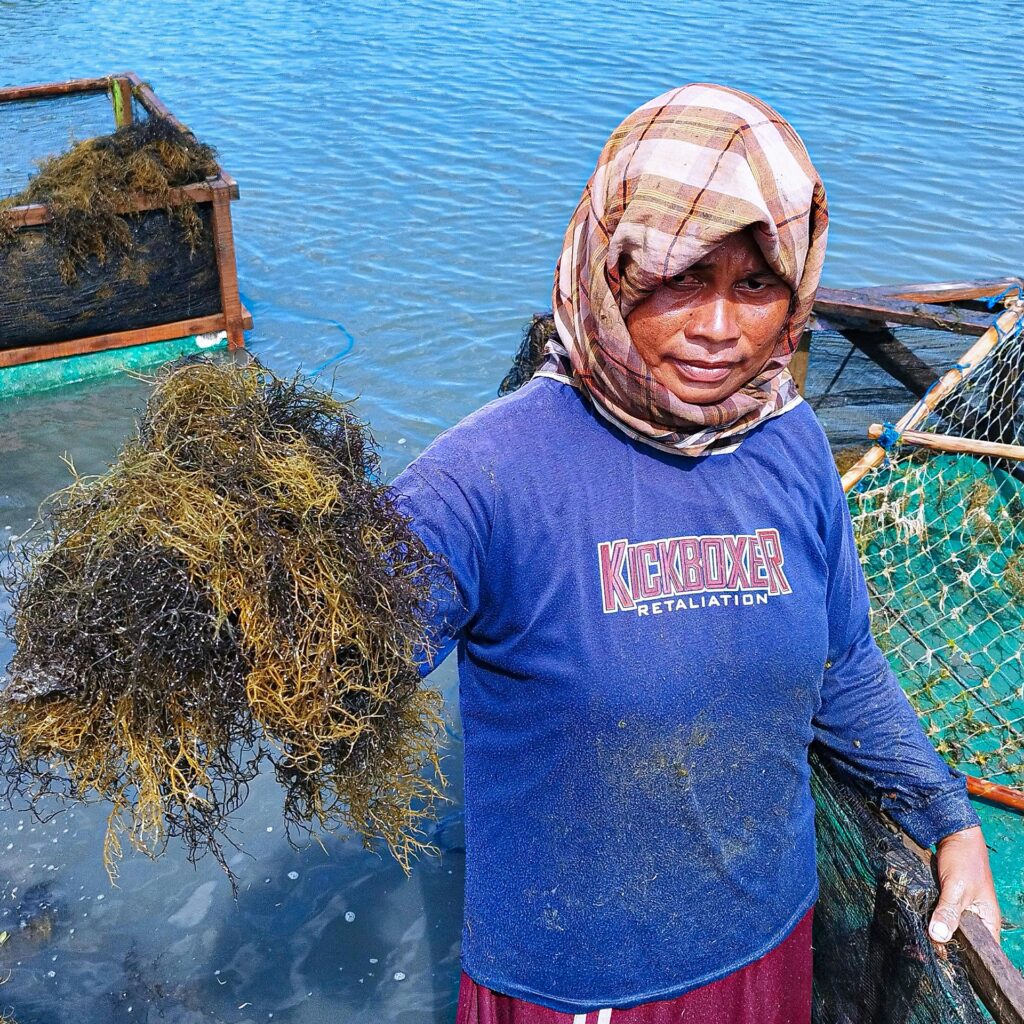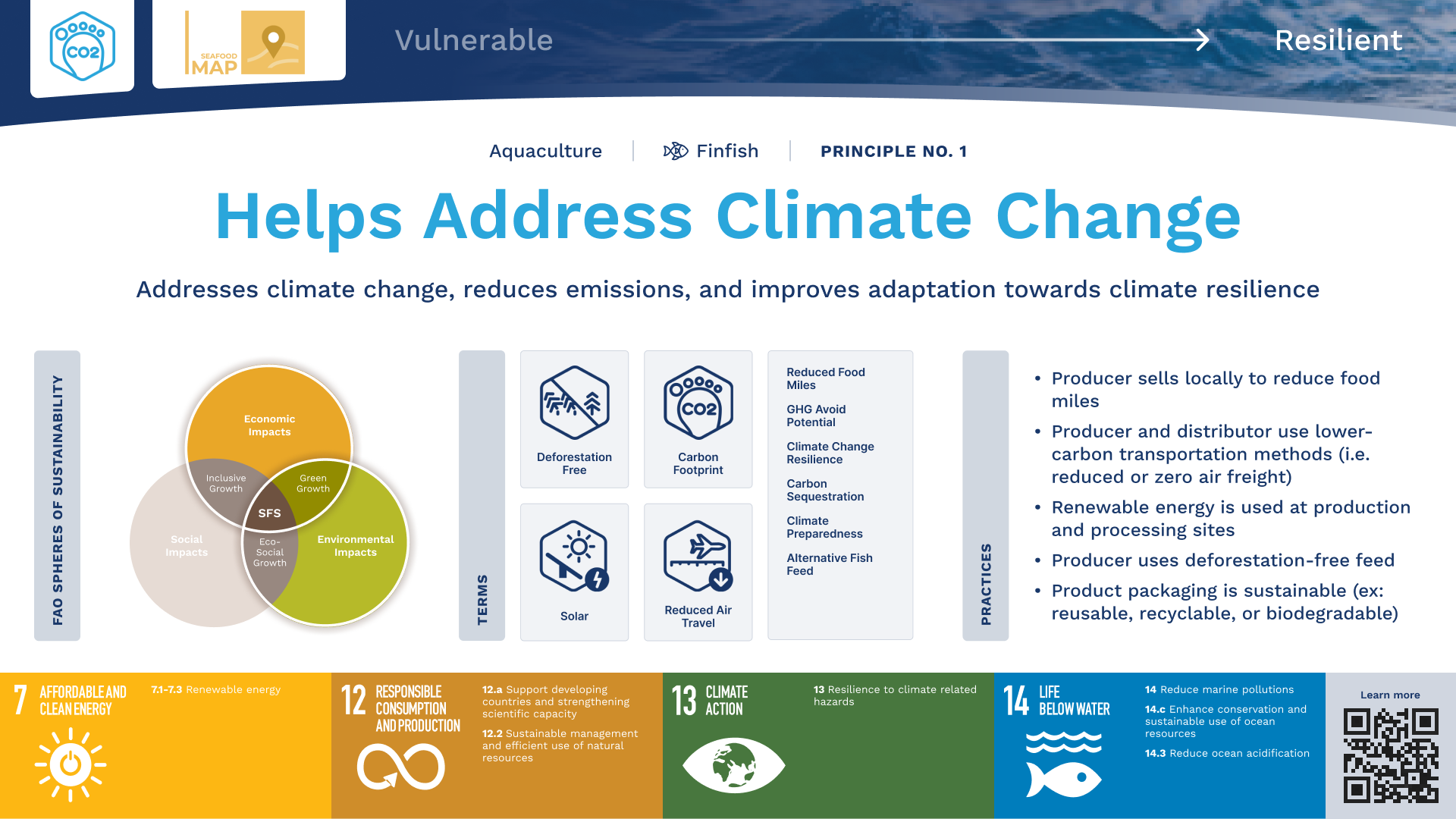
Aquaculture – Principle 1 | Seafood MAP

IDH
Key Topics Explained
Does the seafood we farm impact our climate?
Aquaculture is (just as wild caught) both influenced by and is influencing climate change. Seafood can have a very high or a very low environmental footprint. We currently do not differentiate seafood with a high from seafood with a low footprint. Producers with a low footprint are not rewarded, and producers with a high footprint are not supported to improve.
Differentiating what seafood has what footprint, can only happen when companies collaborate with their supply chain to collect data to understand how it is exactly farmed. The reason for a high footprint can be because of land use change of feed ingredients, because of wasting feed at farm level, energy use at farm, but also because by-products are wasted at processing, because of transport or because of food waste at retail. The supply chain needs to collaborate to figure out what to do to improve the footprint. Similarly, adjusting to climate change, can only happen when the entire supply chain works together to better understand the upcoming risks. There is hence a need for retail, suppliers, processors, producers, and feed companies to work together and share data so that they can better understand and reduce the footprint, and better understand and mitigate risks. Seafood MAP can help companies to make matches and start sharing data – not only of producers sharing data down the supply chain, but also of traders and retailers sharing data up the supply chain.

N/A
N/A